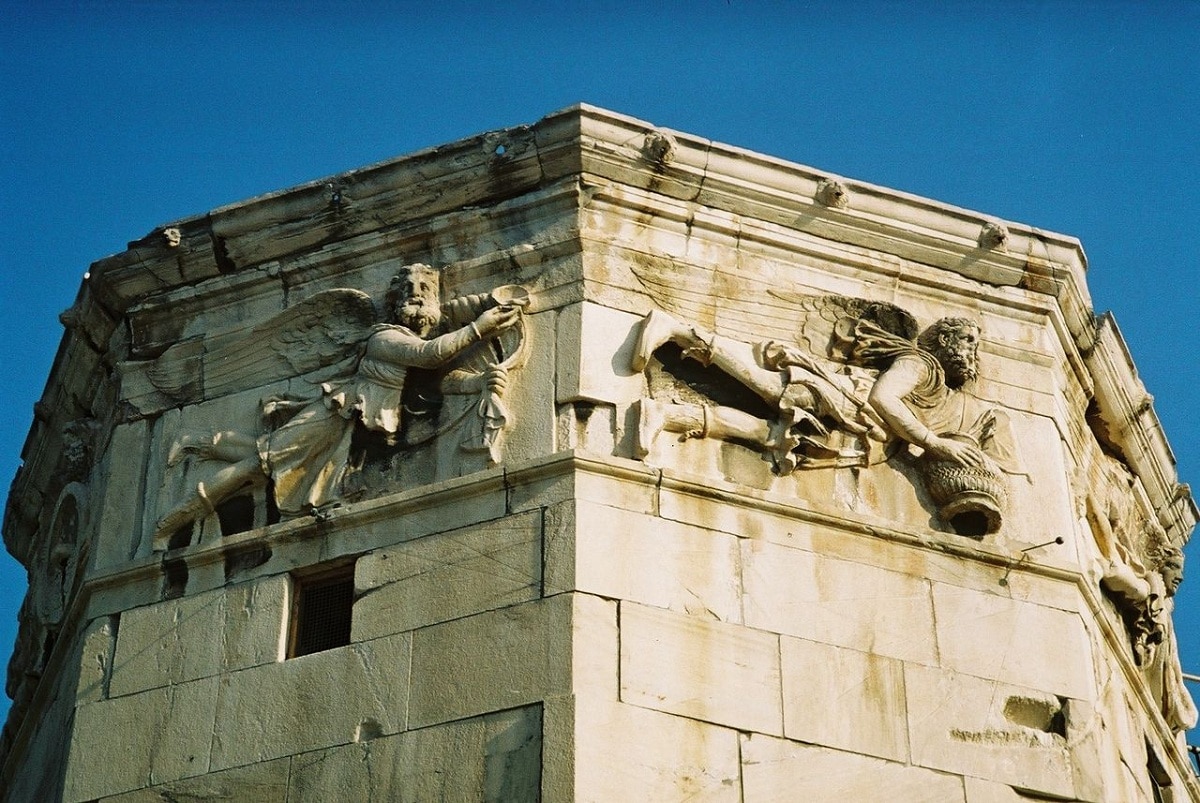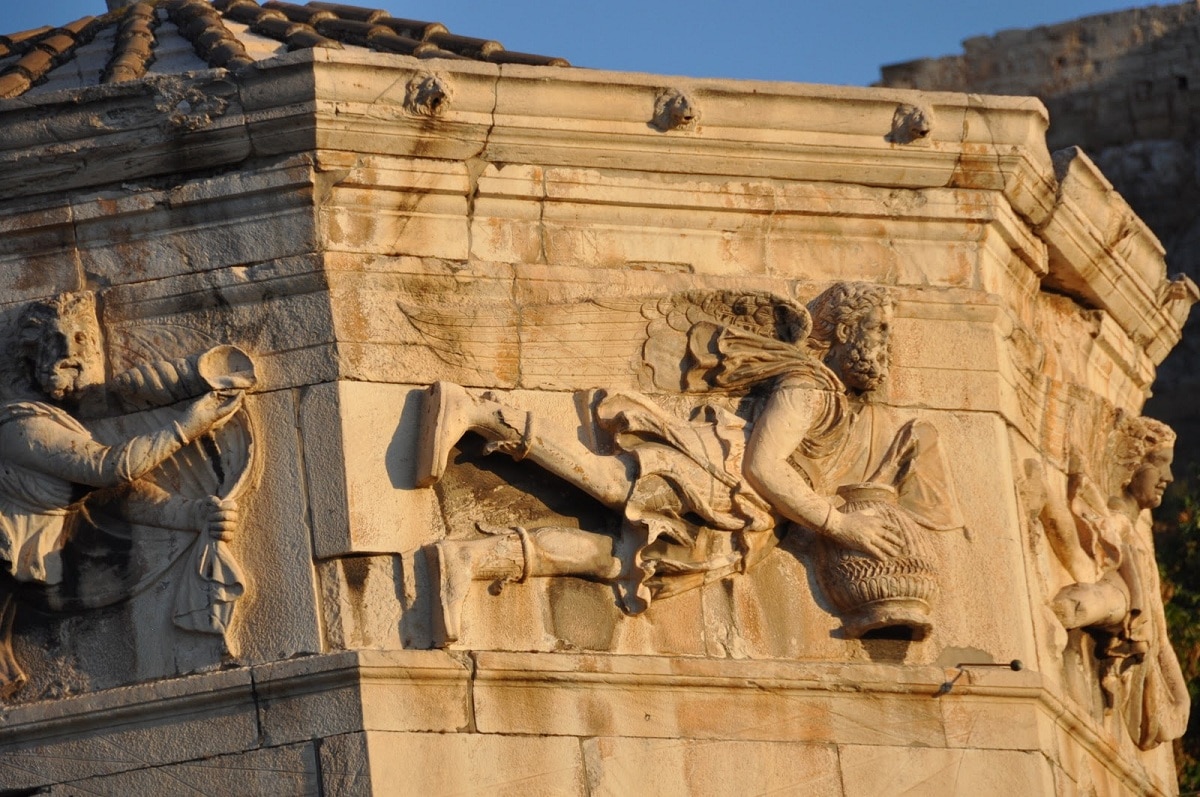
The human being has always been curious to know all the variables that affect the climate and meteorology of an area. The wind was one of the meteorological variables that aroused the most interest since it could not be measured well and could not be seen with the naked eye. Based on this variable, more than two millennia after being built, it still stands. It's about the tower of the winds. It is located in the Plaka neighborhood in Athens near the Roman Agora and at the foot of the Acropolis. It is the first construction in all history that was exclusively destined to perform observational functions in meteorology.
Therefore, we are going to dedicate this article to tell you all the history, characteristics and importance of the tower of the winds.
Key features

It is also known as Horologion or Aérides, it was built by the architect and astronomer Andrónico de Cirro in the XNUMXst century BC. C., commissioned by the architect Vitrubio and the Roman politician Marco Terencio Varrón. It has an octagonal plan and has a diameter of 7 meters and a height of almost 13 meters. It is one of the main singularities that this building has and that makes it unique. And it is that it is a structure that served several uses. On the one hand, it was a temple dedicated to Aeolus, who was the Father of the Winds in Greek mythology, so it served in the religious sphere. On the other hand, it was an observatory for this meteorological variable, so it also had its scientific function.
Each of the dominant winds that blew in classical Greece was identified as a God and they were all sons of Aeolus. For the ancient Greeks it was quite important to know the characteristics and origin of the winds. They wanted to know where the winds came from since it was a trading town that sailed the Mediterranean Sea using sail. The success and failure of commercial activity depended largely on the wind. It is normal that with sailing boats the wind or will play a fundamental role in the transport of goods. All of these were reasons enough to want to study in depth everything about the winds. This is where the importance of the tower of the winds comes from.
The fact that the tower of the winds was chosen next to the Roman Agora (the market square) was not at all accidental. The merchants had a source of useful information for their interests and could make better exchanges.
Origin of the tower of the winds

As we have seen, the wind was one of the most demanded meteorological variables to know at that time. Merchants could have a good source of information very useful for their own interests. Depending on the direction the wind was blowing, it was possible to estimate the delay or advance of some ships to the port. He could also know roughly how long it would take for his goods to reach other places.
To find out if certain trips were profitable, the wind variable was used. If you needed to make some trips with greater speed and urgency, you could better plan one route or another depending on the force and type of wind that was blowing.
Composition of the tower of the winds

The most striking element of the tower of the winds is in its highest part. Each of the 8 facades of the tower culminates in a frieze with a bas-relief just over 3 meters long. Here the wind is represented and in each it seems to be the one that blows from the place where it is facing. The 8 winds selected by Andrónico de Cirro coincide for the most part with those of Aristotle's compass rose. Let's see what are the winds that can be found in the tower of the winds: Bóreas (N), Kaikias (NE), Céfiro (E), Euro (SE), Notos (S), Lips or Libis (SO), Apeliotes (O) and Skiron (NO).
The roof a that is conical in shape was originally from the tower and was crowned by a figure of a revolving bronze Triton God. This figure of the Triton God used to act as a weather vane. The weather vane is used to know the direction of the wind. In his right hand he carried a rod that indicated the direction from which the wind was blowing and it did it in a way similar to what the bolt of a conventional weather vane does. In order to complete the information on the wind obtained in the observatory, there were solar quadrants on the facades located below the friezes. These quadrants had theoretical weaknesses and allowed us to know the time of day when the wind was blowing. This way they could know well when the clouds covered the sun and the time by means of the hydraulic clock.
Other uses
Because this monument is still in good condition, it is awarded to examine and study in comfort and detail. It is without a doubt one of the oldest known scientific monuments. The main objectives of this tower were several. They served to measure time in progress the diurnal and periodic movements of the sun thanks to the quadrants engraved on its 8 sides. These sides were built with pantelic marble. Inside there was a water clock of which there are still remains and you can see the pipes that led the water from the springs on the slopes of the Acropolis and those that served to give an outlet to the excess.
It was the hourglass that indicated the hours of the day when it was cloudy and at night. The roof forms a kind of pyramidal capital of stone slabs with radial joints covered with tiles. It is already in the center where a weather vane in the shape of a newt or other marine divinity rises.
I hope that with this information you can learn more about the tower of the winds and its characteristics.